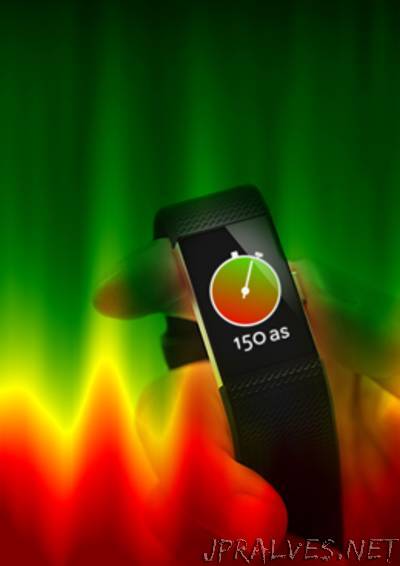
“An international team of physicists has monitored the scattering behavior of electrons in a non-conducting material in real-time. Their insights could be beneficial for radiotherapy. We can refer to electrons in non-conducting materials as ‘sluggish’. Typically, they remain fixed in a location, deep inside an atomic composite. It is hence relatively still in a dielectric crystal lattice. This idyll has now been heavily shaken up by a team of physicists led by Matthias Kling, the leader of the Ultrafast Nanophotonics group in the Department of Physics at LMU, and various research institutions, including the Max Planck Institute of Quantum Optics (MPQ), the Institute of Photonics and Nanotechnologies (IFN-CNR) in Milan, the Institute of Physics at the University of Rostock, the Max Born Institute (MBI), the Center for Free-Electron Laser Science (CFEL) and the University of Hamburg. For the first time, these researchers managed to directly observe the interaction of light and electrons in a dielectric, a non-conducting material, on timescales of attoseconds (billionths of a billionth of a second). The study was published in the latest issue of the journal Nature Physics. The scientists beamed light flashes lasting only a few hundred attoseconds onto 50 nanometer thick glass particles, which released electrons inside the material. Simultaneously, they irradiated the glass particles with an intense light field, which interacted with the electrons for a few femtoseconds (millionths of a billionth of a second), causing them to oscillate. This resulted, generally, in two different reactions by the electrons. First, they started to move, then collided with atoms within the particle, either elastically or inelastically. Because of the dense crystal lattice, the electrons could move freely between each of the interactions for only a few ångstrom (10-10 meter). “Analogous to billiard, the energy of electrons is conserved in an elastic collision, while their direction can change. For inelastic collisions, atoms are excited and part of the kinetic energy is lost. In our experiments, this energy loss leads to a depletion of the electron signal that we can measure,” explains Professor Francesca Calegari (CNR-IFN Milan and CFEL/University of Hamburg).”
